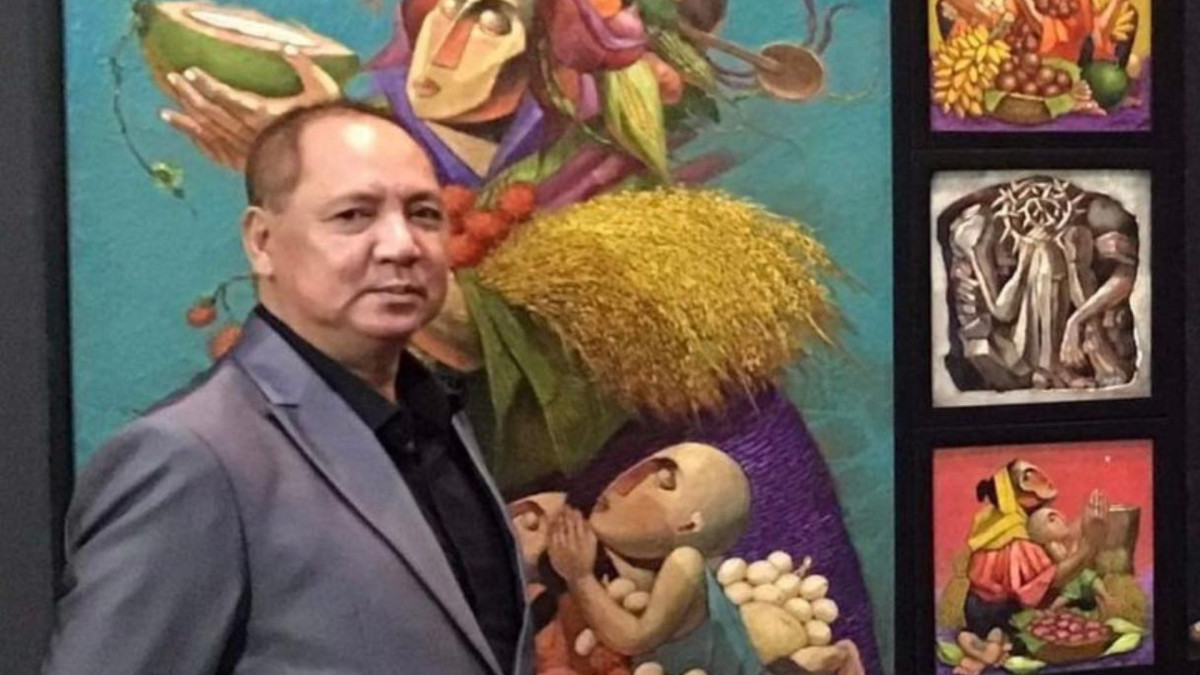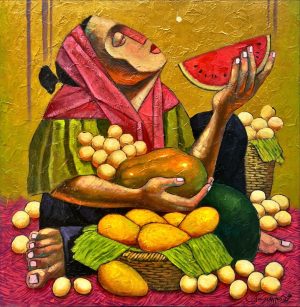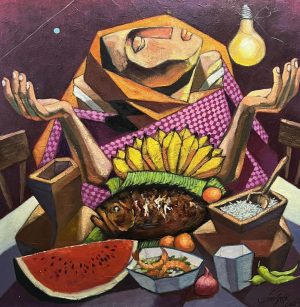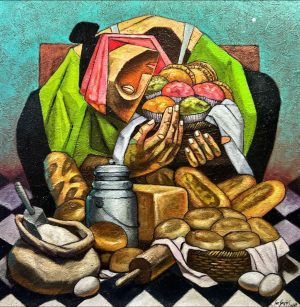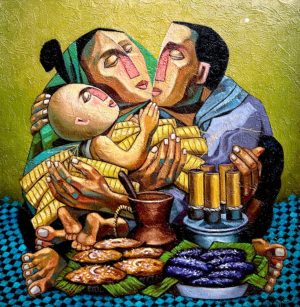Fernando Amorsolo may be the most recognizable painter of Filipino life.
He painted pretty pictures prior to, during and after World War 2.
He was in love with rural life, the farmers, the fishermen, the market vendors, and the women caring for their children while tending to a pot of stew.
But he was heart-broken at the nightmare of war’s cruelty, and what it did to our people’s lives and landscape.
To be able to paint such beautiful pictures amidst the killings is nothing short of an act of faith. Faith that the Almighty will somehow end the suffering. And bring us back to a life once gold and bountiful.
The same faith is written in Jess Santos paintings.
But are Amorsolo themed paintings visionary? No matter the style, no matter the medium, what do they really mean? What are they trying to say?
Romantic, as these art styles may be, the reality in today’s modern world is somewhat darker and depressing. But there is no beauty to be found, without addressing the ugly. Art places emphasis on both realities, in order for us to make our own connection to our lives, and perhaps reflect on what must be done to get to an ideal definition of life.
Jess Santos’ touches on common subjects that have been for centuries ingrained in our collective identity as a people.
Harvesting, done by the Filipino farmer, start the journey of food from farm to our plush tables. And yet they subsist on root crops and condiments, and a pinch of tuyo on a large serving of rice.
Family is the most important part in every Filipino’s life. But its core ideals are breaking apart as many of our countrymen seek work in other places both locally and abroad. Leaving basic child care and formation to whoever has the time.
The subjects are large, bulky and massive. Their postures are tightly wound towards their center. The colors are deep and murky. And his composition is heavily weighted at the center of the canvas, covering almost ninety percent of the area.
These are paintings with a strong core of magma waiting to be seen and heard.
To be reflected upon, understood and thus initiate action.
Beneath the angst and tension, are visions of hope for the Filipino. And there lies the beauty of the paintings.
